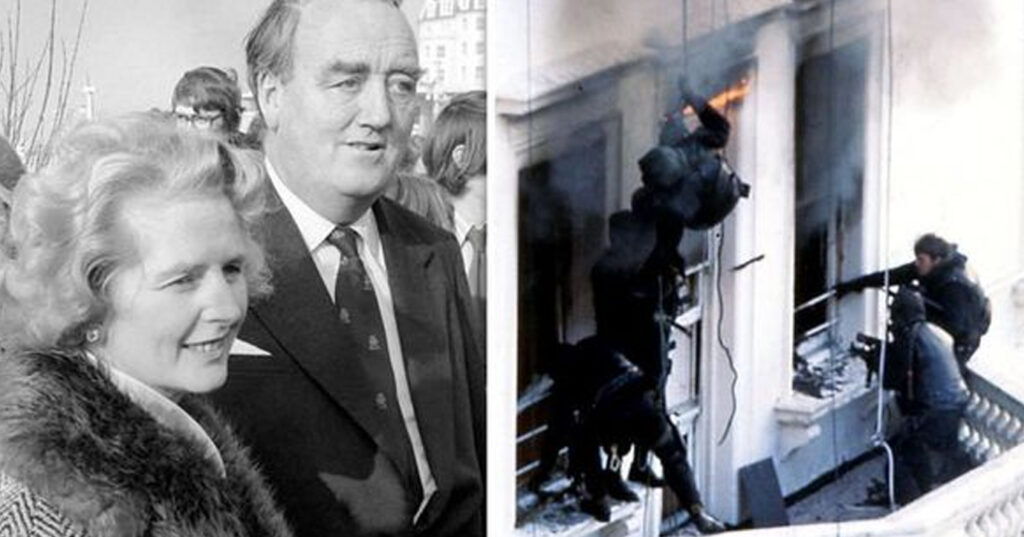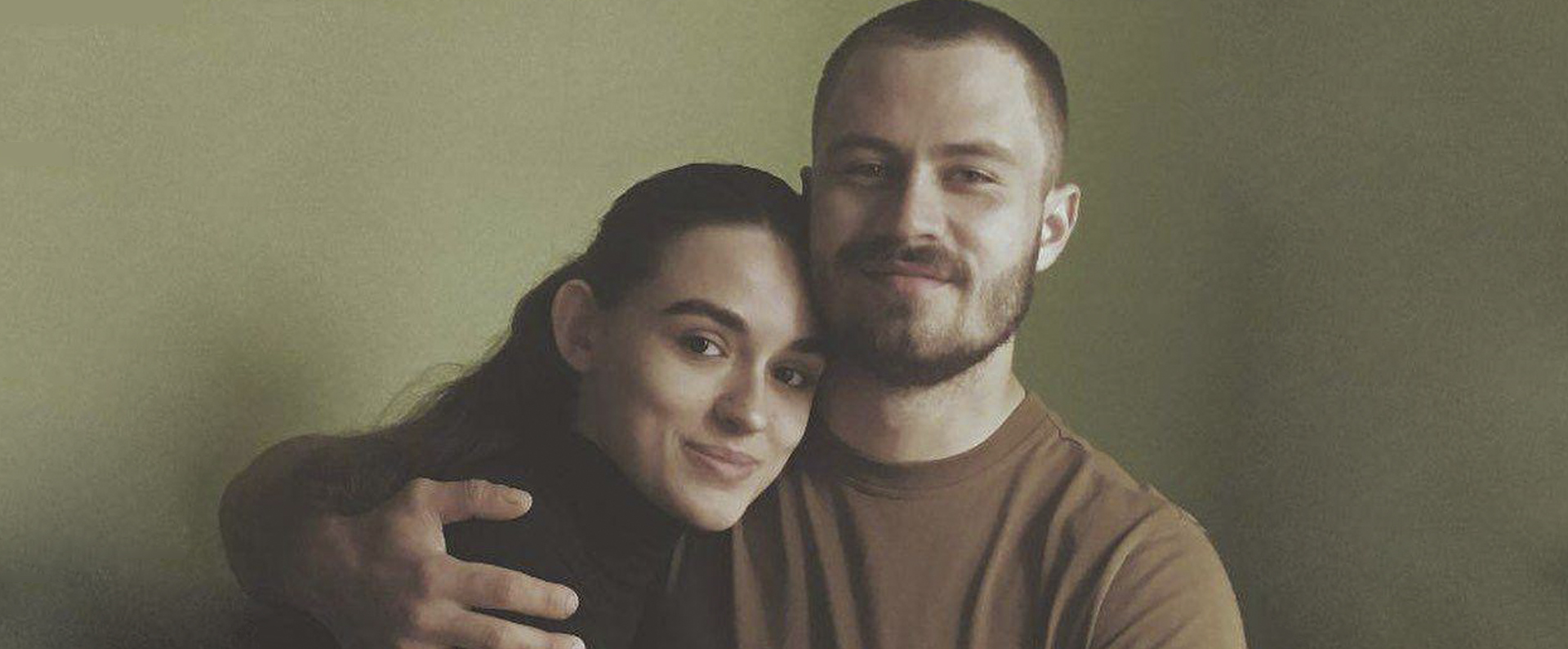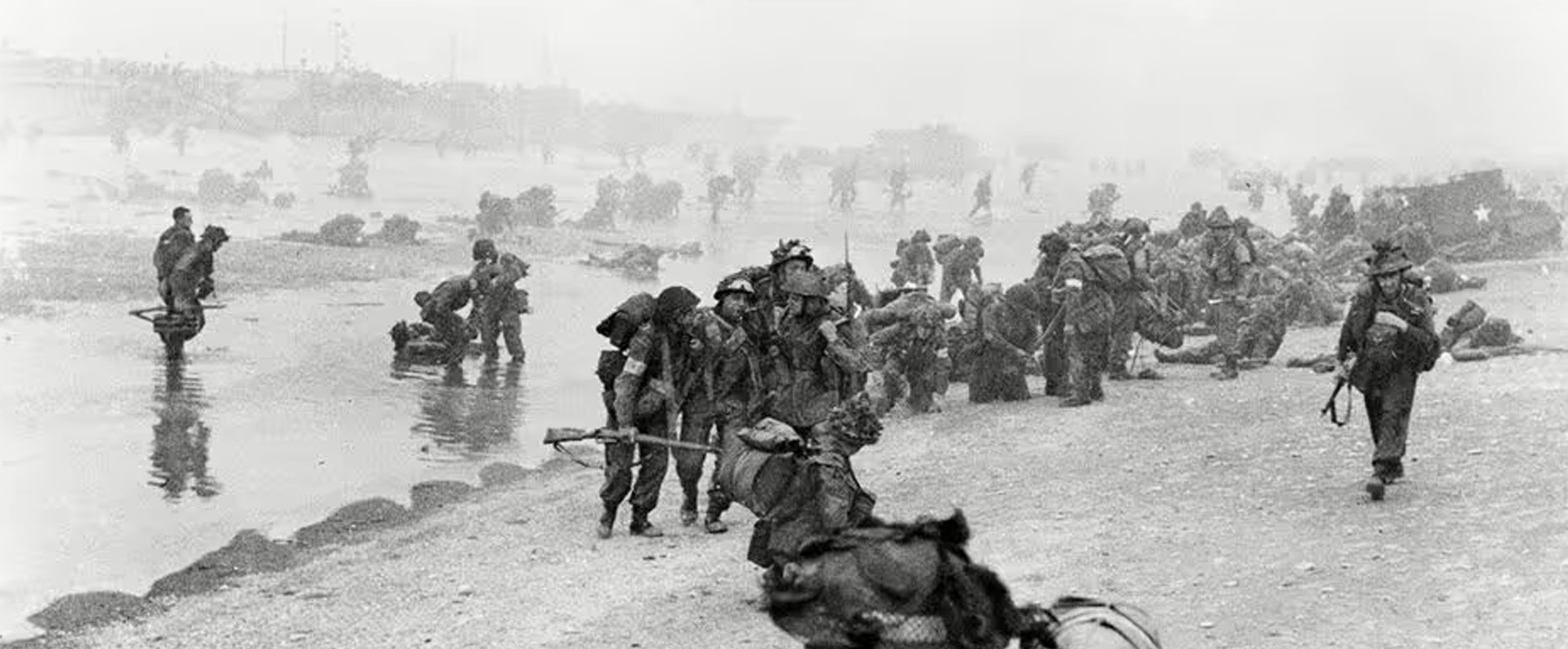
Published in the Daily Express on 05 May 2020.
Lance Corporal John ‘Mac’ McAleese
It was 10pm and Britain’s first woman Prime Minister was in the middle of a group of rugged SAS soldiers in jubilant spirits, sipping chilled beers. In a packed room at the Regent’s Park Barracks in central London, a television was wheeled in so everyone could watch the late news.
“****ing sit down, Maggie. I can’t see,” said Lance Corporal John “Mac” McAleese, a rock-hard Scot prone to colourful language.
For a moment, there was an awkward hush. It was not the way Margaret Thatcher was usually addressed. But she simply did as she was told and sat down cross-legged on the floor. Her husband, Denis, was nearby.
As Big Ben struck 10pm, there was silence as everyone in the room watched the events from earlier that evening – the most dramatic and successful 17 minutes in SAS history.
The remarkable rescue that led to the SAS, better known by its members as The Regiment, started to unfold 40 years ago – on May 5 1980 – in the heart of the capital.
As the author of two books on the SAS, Special Forces Heroes and Special Ops Heroes, and as the proud owner/custodian of several medal groups from those who took part in the storming of the Iranian Embassy, I have been given a unique insight into those events.
It is often forgotten that the prelude to the ending of the siege could hardly have been more contrasting to the joyous scenes after the successful storming of the Embassy.
Just three days earlier, on May 2, Captain Herbert Westmacott, 28, had become the first SAS man to be killed during The Troubles. He was shot dead by the IRA while leading an eight-man patrol in a raid on a Belfast house.
With The Regiment still in mourning, the SAS staged, in full view of the nation watching on television, a daring raid to end the siege.
It was at 11.32am on April 30 that six gunmen burst into 16 Prince’s Gate, an elegant Georgian building on the edge of Hyde Park.
Amid the chaos that ensued, 26 hostages were trapped inside, including PC Trevor Lock, a diplomatic protection squad officer. The terrorists were from a group called the Democratic Revolutionary Force for the Liberation of Arabistan. The terrorists were seeking the liberation of the oil-rich province of Khuzestan – which they called Arabistan – from Iran. Soon a huge police and Army presence gathered outside the embassy, including the SAS’s own anti-terrorist team, formed more than five years earlier.
As the negotiations continued, some 50 SAS men gathered at Regent’s Park Barracks, where 16 Prince’s Gate was quickly named the “Stronghold” for operational purposes. A model of the building was constructed for Lt Col Michael Rose, the Commanding Officer of the SAS, and others to study.
The men were split into two teams, Red and Blue. The Red Team concentrated on the immediate action plan of breaking down the doors and storming the building if shooting started or it was believed hostages,were about to be killed.
The Blue Team concentrated on the deliberate assault plan, which was more complicated and involved the SAS, not the terrorists, deciding when to enter the building.
For five days, the Prime Minister and her Home Secretary, Willie Whitelaw, stood firm: there was to be no giving into terrorists’ demands: initially autonomy for Aribistan and the release of 91 prisoners held by Iran (over which they had no control) and then other demands for their safe passage. By Monday May 5, the Bank Holiday, five hostages had been released unharmed. Whitelaw announced to the Army and police that the “ambassadorial phase” was over and a firmer line would be taken. For the first time, the Red and Blue Teams had a joint morning briefing.
On May 5, there were numerous threats to kill one or more hostages from Oan Ali Mohammed, the terrorist leader, who had been codenamed “Salim” by the SAS.
Then at 12.45pm, three shots were heard from inside the building followed by three more at 6.50pm. Shortly afterwards, the dead body of Abbas Lavasani, the Iranian Embassy press attache, was pushed out of the front door (in fact, he had been killed during the first round of shooting).
His body was picked up and put on a stretcher: all this was shown on live television.
By killing one hostage and threatening to continue to kill one every half an hour, the terrorists had ended all chance of a negotiated settlement.
In fact, the SAS had been committed to action at 6.53pm, as soon as there was proof a hostage had been killed.
The negotiator, however, stalled for time telling Oan, aged 27, that a coach was coming and that he and his five comrades would be taken to Heathrow and allowed to fly out of the country.
Operation Nimrod was finalised: Red Team would deal with the three floors at the top of the building and Blue Team would go in and clear the basement, ground and first floors. A third eight-strong team had to abseil 40ft from the roof of the building to gain entry through a second- floor rear window.
Between them, the SAS teams had to search and clear more than 50 rooms on six floors – and the priority was to reach all remaining hostages before they came to harm. It was feared, however, that there would be up to 40 per cent casualties among the hostages.
The negotiator distracted Oan with talk of transport but at 7.26pm his job was over. An explosion rang out: Red Team had blown the skylight on the Embassy roof and the three pronged assault was under way.
All the SAS men wore black kit designed for an anti-terrorist role. Beneath their carbon lined NBC (nuclear, biological and chemical) suits, they wore black overalls and body armour. They were armed with MP5 German made machine-guns, 9mm Browning pistols and stun grenades. They wore hoods, respirators and radios with earpieces and throat microphones tuned to a communal network.
Mac, who would later that evening swear at Mrs Thatcher, led Blue Team, taking a window frame charge to the first floor balcony. “When the charge blew, half the balcony ****ing disappeared.
The balustrade was blown clean off.,” he said later. Mac also described the confusion as the soldiers tried to sort hostages from terrorists. “I was at the top of the stairs, and I saw this bloke push past me, with the hostages in front and behind, and remembered we had a description of most of the terrorists. I shouted over the bannister, ‘There’s one coming now’!” An SAS comrade put several rounds into the terrorist at point blank range.
PC Lock, who had managed to remain armed through the siege, struggled with Oan, the terrorist leader, as the assault began. But the police officer was quickly pulled aside by two SAS men, who pumped 15 rounds into Oan.
There were many other heroics too. In the early moment of the assault, a sniper had shot one of the terrorists in the telex room, thereby saving the lives of up to 15 hostages.
Operation Nimrod took just 17 minutes. In that time the reputation of The Regiment was transformed because, for the first time, it had operated in the full glare of the world.
Of the 26 hostages originally taken, five had been released and one killed minutes before the assault on the building. During the 17 minutes of chaos, one further hostage was killed but the other 19 were rescued. Five of the six terrorists were shot dead. The sixth was arrested and later given a life sentence.
As soon as the area was deemed safe, William Whitelaw arrived with tears of relief and joy running down his face. “I always knew you would do a good job, but I didn’t know it would be this good,” he said.
The SAS suffered just one injury – third degree burns to a soldier hurt in his abseil. The siege was officially declared to be over by Scotland Yard at 8.15pm. Sergeant Peter Winner (name changed for security reasons), a member of the SAS team , was right when he said later: “The day would live for ever in regimental history, of that we were sure.”
So is it any surprise that so soon after the SAS’s finest hour, Mrs Thatcher was prepared to ignore the odd swear word after inviting herself into Regent’s Park Barracks?
In fact, after arriving to congratulate the SAS that evening, Mrs Thatcher said: “Gentlemen, there is nothing sweeter than the taste of success, and you boys have got it.”
Read this article in the Daily Express
For more information, visit:



